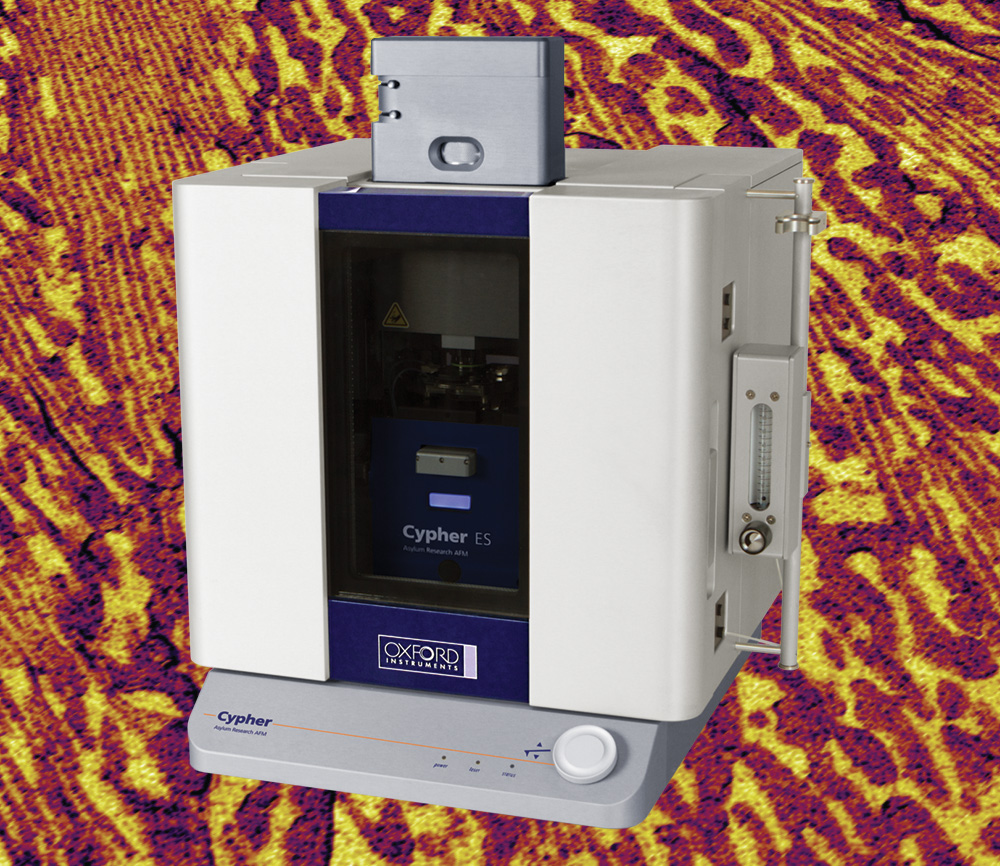AFM Systems
AFM Accessories
Learning
Contact Us

The Cypher ES Polymer Edition is a special configuration of the Cypher ES AFM tailored to excel in polymer science research. It shares the same extraordinary performance and versatility as the Cypher ES, but comes standard with blueDrive photothermal excitation, three powerful techniques from our NanoMechPro toolbox for nanomechanical characterization, and the high-temperature polymer heater.
Includes temperature control of the sample from ambient to 250°C
Contact mode
DART PFM
Dual AC
Dual AC Resonance Tracking (DART)
Electrostatic Force Microscopy (EFM)
Force curves
Force Mapping Mode (force volume)
Force modulation
Frequency modulation
Kelvin Probe Force Microscopy (KPFM)
Lateral Force Mode (LFM)
Loss tangent imaging
Magnetic Force Microscopy (MFM)
Nanolithography
Nanomanipulation
Phase imaging
Piezoresponse Force Microscopy (PFM)
Switching spectroscopy PFM
Tapping mode (AC mode)
Tapping mode with digital Q control
Vector PFM
AM-FM Viscoelastic Mapping Mode
Contact Resonance Viscoelastic Mapping Mode
Fast Force Mapping Mode
Conductive AFM (CAFM) with ORCA™ and Eclipse™ Mode
Current mapping with Fast Force Mapping
Electrochemical Strain Microscopy (ESM)
High voltage PFM
Nanoscale Time Dependent Dielectric Breakdown (nanoTDDB)
Scanning Microwave Impedance Microscopy (sMIM)
Scanning Tunneling Microscopy (STM)
Note: sMIM requires the Cypher S scanner.